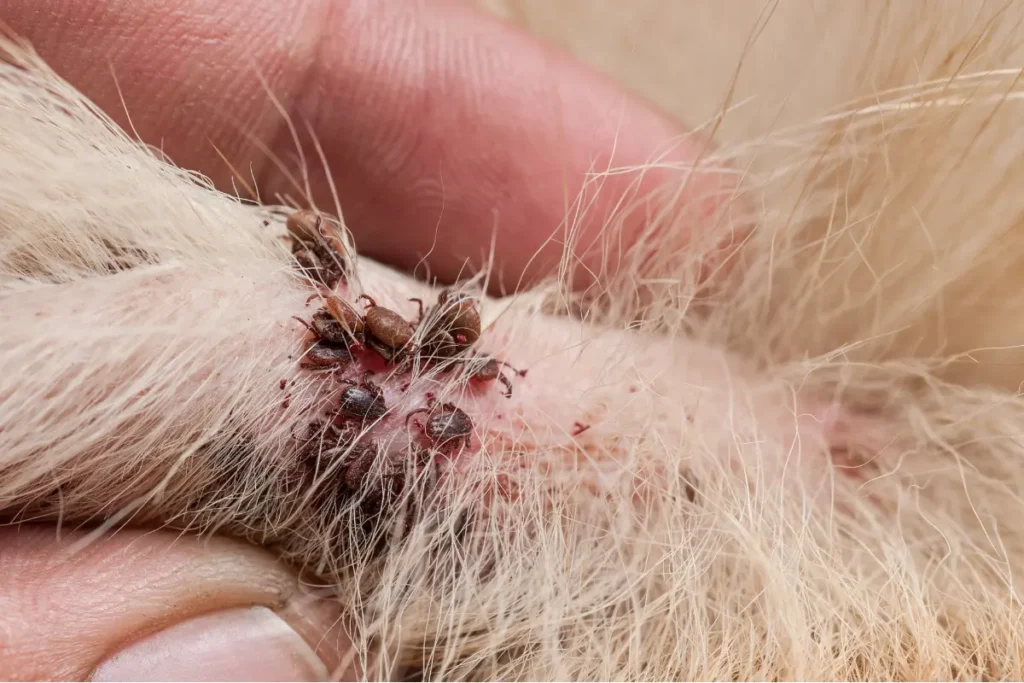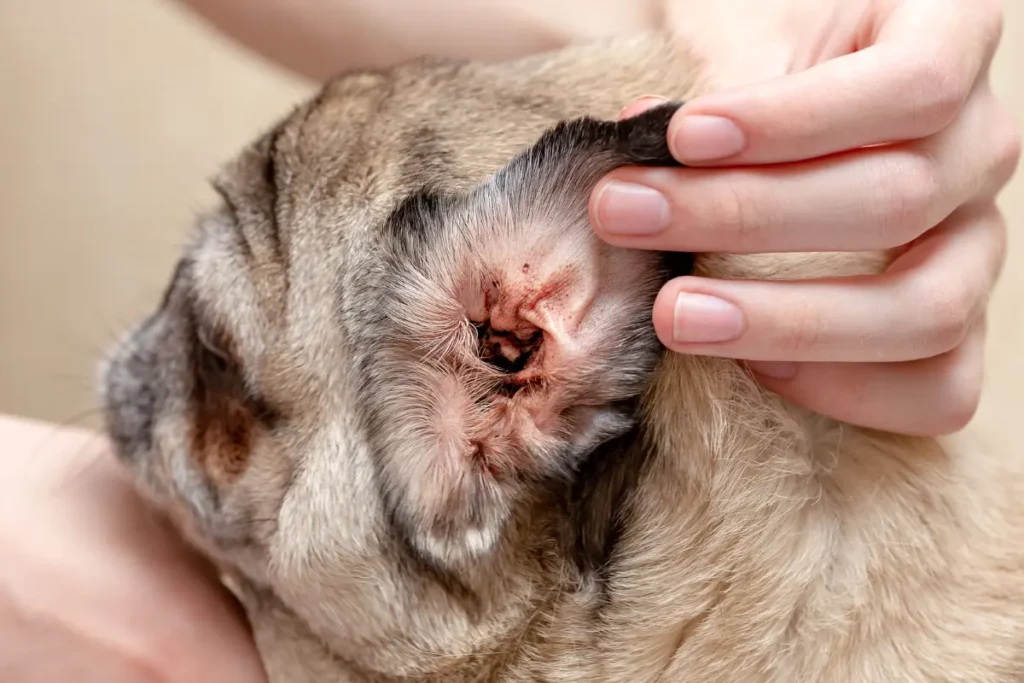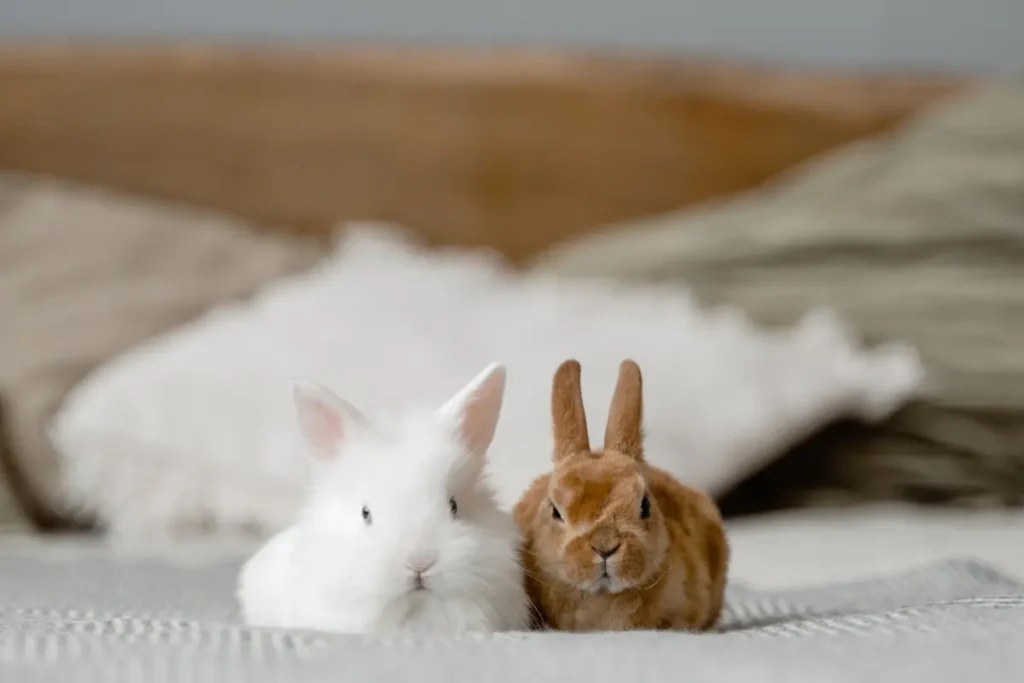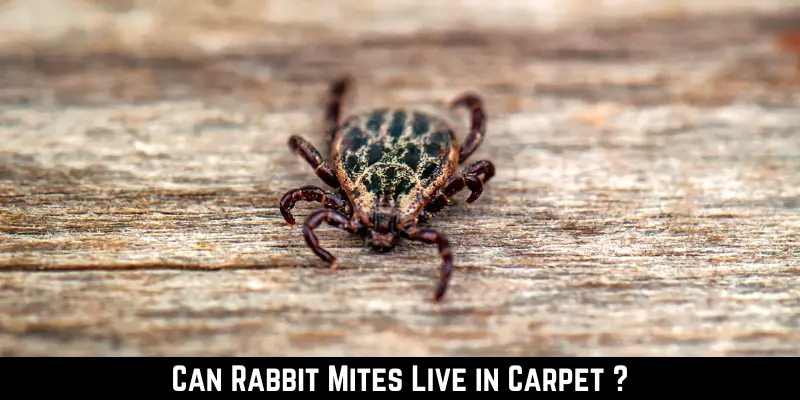Rabbits are fun around the house but can be a carrier of parasites. As a rabbit owner, you must be concerned about the transmission of the mites inside your home. Are you worried; can rabbit mites live in carpets?
Unfortunately, yes, rabbit mites can live inside carpets. Mites can move from the rabbit’s fur to find a new host. They can confuse the carpet with animal fur and will reside in it and slowly spread into the entire house. The presence of mites at home can cause skin irritation in humans.
Continue reading the article to the end to find more detail on the mites, signs, and methods to get rid of them.
What Are Rabbit Mites?
Rabbit mites are tiny parasites that live inside the fur. They feed on the skin and fur cells of the animal and can live inside the ear.
There are many different types of mites that are specific to the animals. The mite which affects animal fur is cheyletiella parasitovorax, and psoroptes cuniculi affect rabbit ears.
Fur Mites

Cheyletiella parasitovorax is also known as Fur mites or walking dandruff. Generally, cheyletiella mites infestations are more frequent in rabbits than in any other domestic animal.
Initial symptoms of rabbit mites are excessive itching and scratching causing flaky skin. The obvious indication of mites is extreme dandruff made up of dead cells and the mite itself. You will see white skin peeling off, from the shoulders, above the tail, near the back leg, and the perianal region.
Due to continuous scratching, there will be inflammation and redness. As mites feed on hair cells, there will be massive hair loss in rabbits, especially between shoulder blades and behind the neck. You might also see large lesions on joints, elbows, and ankles.
Ear Mites

Psoroptes cuniculi is a common parasite that affects pet rabbit ears. Rabbit ear mites cause thick reddish-brown scabs inside the ear canal. It can cause infection in one ear or both at the same time.
The rabbit ear mite infection is more painful as it causes irritation and itching inside ears, making rabbits much uncomfortable. It can also cause painful ear ulceration.
You can also see hair loss around the ears, neck, and head. Rabbits suffering from ear mites frequently shake their head and will excessively scratch their ears. If untreated, it can lead to complete hearing loss in the rabbits.
What Do Rabbit Mites Look Like?
The common rabbit mite, cheyletiella parasitovorax, are tiny, yellowish crawling creatures that reside on the rabbit fur. The cheyletiella mites are visible to the naked eye and can appear as dandruff on the rabbit skin.
The lifecycle of mites is at least five weeks. Female mites survive at least ten days on the rabbits. During this period, it lays eggs on the rabbit’s skin. The growth from an egg to a mature adult mite occurs on rabbit fur and will take nutrients from the skin and hair cells.
If your rabbit is shedding excessive patches of skin that appear as small white particles, closely observe it, you might see a mite or two on it. Adult mites are at least 0.3mm long and have a pair of four legs.
To confirm the mite on rabbits, vets can perform a lab examination of the rabbit skin. The cheyletiella mite appears more clearly under the microscope.
Can Rabbit Mites Live In Humans?

Rabbit mites, known as fur mites or walking dandruff, can also pass on to humans. It does not cause any crucial health risks and can cure within a few days if treated on time.
The infection caused by mites ranges from mild skin irritation to severe illness with systemic symptoms. Children who spend most of their time with rabbits can have severe symptoms.
Mites do not live inside humans as they cannot penetrate human skin. Diagnosis of mites in humans can be challenging because cheyletiella mites do not lay eggs on human skin.
It feeds on the debris on the debris and fluids present on the dermis causing skin irritation, especially on the arms, legs, and thighs, along with itching and red bumps. Arthralgia and peripheral eosinophilia is also a less frequent symptom of Cheyletiella infection.
If a rabbit is taken to the vet immediately, the chances of reoccurring mite infestation in humans eventually decrease.
How To Treat Rabbit Mites?

Rabbit mites are common. Almost fifty percent of rabbits are asymptomatic and silent carriers of the cheyletiella mites. Before treatment, you need to have a confirmed diagnosis that can be visible from flaky and shredding skin. However, to validate your diagnosis take the rabbit to the vet immediately.
The vet will take a skin scraping or aspirate rabbit fur with the help of a vacuum to identify the organism present under a microscope.
After confirming the presence of mite, the vet will treat the rabbit with injectable medications, ivermectin. Rabbit is given ivermectin injection for eleven to eighteen days depending upon the severity.
If you are not a professional, do not try to inject the medication yourself. The vet will also prescribe the topical ointment, revolution (selamectin).
How To Get Rid Of Mites On Rabbits At Home

Rabbits are playful and can spread joy when they are healthy. The mites infections will cause continuous pain in the rabbit.
Below are a few measures you can take when your rabbit has a mite infection.
- As soon as you diagnose the mite infestation in your rabbit, isolate it in the corner of the house far from other animals and children, as mites are transmissible and can transmit from one host to another.
- Mite treatment takes several days in rabbits. It is better to place the rabbit inside the cage to prevent it from running around,
- Replace the rabbit bed and change it daily until it heals to stop reinfection. Better to use a disposable rabbit bed rather than using cloth bedding. Once the rabbit is healthy and free of mites, replace bedding weekly.
- Wait for scabs to heal on their own with proper treatment. Never try to remove scabs from rabbit skin yourself. Peeling the scabs will cause a lot of pain to the rabbit. It will create an open wound that is prone to further infections.
- Apply oil or petroleum jelly to the rabbit ears, especially on the scab. It is not an alternative to proper veterinary treatment. Essential oils and petroleum jelly kills the mites inside rabbit ear by suffocation. Apply it twice a day inside the rabbit ear canal. Wear gloves and be careful not to damage the rabbit ear drum while applying. Be very gentle, do not insert your fingers deep into rabbit ears.
How Do I Get Rid Of Rabbit Mites from My House?

Rabbit mites can transmit from one animal to another. It can live inside carpets, blankets, beds, and other upholstery. Though they cannot lay eggs on the furniture, they can still live in it for days. When your rabbit has a mite infection, it is better to isolate it to prevent mite infestation from spreading inside your house.
- Clean all the rooms and surfaces, including bedding, carpet, sofa, chairs, and stuffed toys.
- Vacuum the carpets and upholstery before treating them with anti-parasitic dust. The anti-parasitic dust is commercially available. Sprinkle it on the surface and let it sit for a few hours.
- Then vacuum the carpet again. Never try to get rid of mites through steam cleaning or shampoo, as the moist environment is favorable for mites to grow.
Conclusion
It is difficult to diagnose the mite infestation in rabbits on your own, even though you can see them with the naked eye. The rabbit mites discussed here are of two types; cheyletiella parasitovorax affects rabbit fur, and psoroptes cuniculi affect rabbit ears. The symptoms caused by both of these mites are similar.
Take the rabbit immediately to the vet for treatment, or else it can result in hearing loss and even death. Rabbit mites can transmit to humans and infest the house as well. To remove the mites, clean all upholstery and carpets. Plus, get yourself diagnosed too.
References
What’s Eating You? Cheyletiella Mites
Mohamad-Radzi, N.N., Che-Amat, A., Aziz, N.A.A. et al. Preliminary detection of mites and coccidia with their zoonotic potential in meat-farmed rabbits in three districts in Selangor, Malaysia. J Parasit Dis 45, 169–175 (2021)

